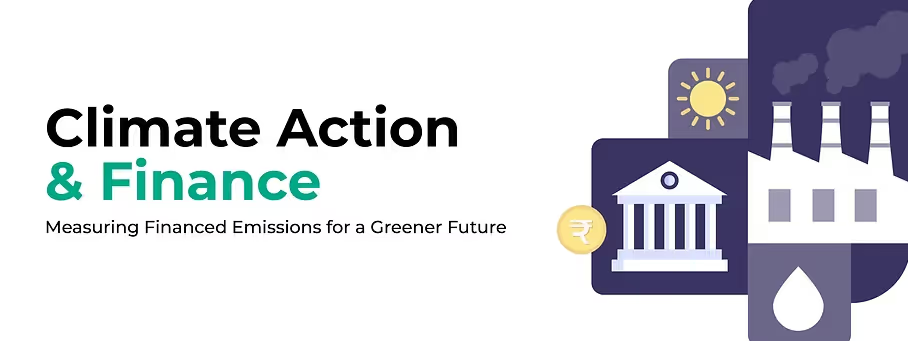
Solutions
Carbon Management
ESG Intelligence
Climate & Nature Risk
Data Registry
Beta
Sector
Get started, schedule a demo or request a free assessment!


The race to net zero emissions is on, and as individuals, businesses, and nations, we all have a role to play. But navigating this complex journey requires clear visibility, precise measurements, and a shared understanding of our impact. This is where measuring financed emissions emerges as a crucial tool, illuminating the path towards a sustainable future.
Simply put, they are the greenhouse gas (GHG) emissions associated with the activities of companies and projects that financial institutions support through loans, investments, and other financial products. In other words, it's not just about the emissions generated by the financial institution itself, but also the indirect emissions that are enabled due to capital from financial institutions funding business operations.
Measuring financed emissions offers a multitude of benefits, propelling us towards a net-zero future:
Financial institutions face growing climate-related risks, from extreme weather events impacting borrowers to regulatory changes targeting high-emitting sectors. By measuring financed emissions, institutions can identify and assess these risks, guiding them toward more sustainable investment and lending decisions. This proactive approach mitigates financial losses and fosters long-term resilience.
Investors increasingly seek alignment with net-zero goals. Measuring financed emissions allows them to understand the true environmental footprint of their portfolios and make informed choices. This transparency empowers investors to shift their capital towards low-carbon solutions, driving positive change within the financial system.
As climate awareness grows, stakeholders demand transparency and accountability from financial institutions. Measuring financed emissions demonstrates a commitment to sustainability and provides valuable data for engagement. This builds trust, strengthens relationships, and fosters collaboration towards shared climate goals.
Governments need accurate data to design effective climate policies and regulations. Measuring financed emissions provides valuable insights, enabling them to target high-impact sectors and incentivize sustainable practices. This data-driven approach ensures that policies are effective and efficient in achieving net-zero goals.
By identifying high-emitting sectors and activities, measuring financed emissions highlights areas where innovation and green technologies are most needed. This directs investment towards clean solutions, accelerating the transition to a low-carbon economy and fostering a sustainable future.
Accurate measurement of financed emissions is challenging due to outdated or incomplete data, complex supply chains, and lack of transparency from customers. Furthermore, diverse asset classes across sectors and geographies pose a challenge in tracking and aggregating emissions. Hence, a comprehensive strategy is needed to tackle these issues effectively.
Here are the key components of a comprehensive strategy for a financial institution to calculate its financed emissions:
Utilizing AI and ML technologies can automate data extraction from various sources and facilitate the collection of accurate and comprehensive emissions data. Additionally, AI-powered analytics can assist in tracking emissions from individual investments and aggregating them meaningfully.
Transparent collaboration among internal and external stakeholders is crucial for accurate emissions data. Embracing global standards such as the PCAF Standard, GHG Protocol, and UNFCCC standards streamlines calculations and ensures consistency in reporting.
Setting interim and final targets aligned with frameworks like the SBTi (Science-Based Targets initiative) helps institutions stay on track with their sustainability goals. Regular evaluation of progress ensures transparency and accountability.
Measuring financed emissions is a complex but necessary task for financial institutions committed to sustainability. A comprehensive strategy encompassing CO2 equivalent, WACI, economic and physical emission intensities, and financial impact, supported by AI and ML technologies, is essential. Collaboration and adherence to global standards, along with setting targets and evaluating progress, are key to successfully navigating the intricacies of measuring financed emissions.
StepChange is committed to empowering organizations, enterprises, financial institutions, NBFCs, and Asset Managers to take action towards a sustainable future. We recognize the critical role of measuring financed emissions in achieving net zero, and we actively support those who are promoting transparency and accountability within the financial sector.
Join us on this journey! By understanding and measuring your financed emissions, we can collectively chart a course towards a net-zero future, one informed decision, and sustainable investment at a time.

.svg)